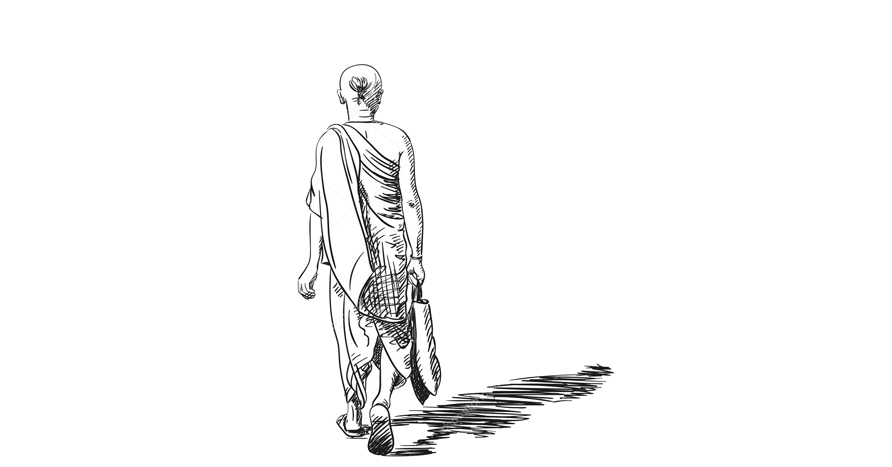
Devdutt Pattanaik
Prudent Mythologist
An important set of migrations took place between 500 CE and 1000 CE in different parts of India. These were the Brahmin migrations. The Brahmins came with special skills. Unlike the Vedic Brahmins, who only performed yagyas for the material well-being of their patrons, the new Brahmins were known for establishing villages.
Whenever we speak of migrations, we think of the Aryan migration into India 3,500 years ago. The British colonialists insisted, for their politic reasons, that this was an invasion. But, scientific investigation, based on linguistics, archaeology and genetics, has proven conclusively that it was a migration that occurred in phases over centuries.
Yet, Indian culture is not just the outcome of the Aryan invasion. There have been many migrations within the subcontinent that have often not been discussed in history books. They are not part of popular memory. Let us discuss three of these migrations that changed the face of India.
An important set of migrations took place between 500 CE and 1000 CE in different parts of India. These were the Brahmin migrations. The Brahmins came with special skills. Unlike the Vedic Brahmins, who only performed yagyas for the material well-being of their patrons, the new Brahmins were known for establishing villages. Villages increased the expanse of cultivated lands, hence the income of kings. Thus, kings or ambitious warlords in different parts of India would invite Brahmins to come to their kingdoms to establish temples, transforming village gods into local forms of mainstream Puranic gods. The deity of the temple was designated the real owner of the villages. The king was merely a viceroy, and the priest served both king and deity. The temple would then become the centre for tax collection. It also became the place of culture, where art, music and literature would develop.
The Brahmins thus enabled the king to become royal and expand his reach over the land. This is captured in the story of Vamana Avatar, who receives a piece of land from the Asura king Bali. The lands received by the Brahmins are known as Brahmadeya land and the lands where Brahmins stayed were called Agraharas. Across India, we find many large copper plates discussing how kings would give these lands.
One of the most popular migrations of the Brahmins happened when the Sena kings invited the Brahmins of the Gangetic plains to come to Bengal. The other was when the kings of Konkan and Goa invited the Gaud Saraswat Brahmins of Kashmir. These Brahmins had travelled from Kashmir and the banks of the Saraswatriver, via Bengal, to the Konkan coast. Another migration happened when Brahmins were called to Madurai and Tanjore, from Maharashtra. This is how the Sanskrit cosmopolis spread across India during this period.
The second migration was the weaver migration. These took place between 1500 and 1800 AD. The Deccan plateau was controlled by agricultural economy. The coastal areas of India were popular for their weaving communities. Fabrics would be exported across the world and this made India a centre for textiles.
The story goes that Markendeya wanted to give the gods clothes. Thus, from a firepit, he created a sage called Bhavana Rishi, who had with him a ball of threads that he had collected from the navel of Vishnu. He spun this thread and wove it into a fine cloth which he distributed among the gods. From Bhavana Rishis descended the Padmashali and other communities of weavers.The weavers migrated from Saurashtra to Madhya Pradesh to the various kingdoms in the Vijaynagar empire. They were popular among temples because the cloth would be used for various temple rituals. The cloth was also used by the communities that lived around the temple. They were invited to port cities, from where the merchants could sell their goods to the rest of the world.They would move to wherever they would get tax rebates and good incentives. Various push and pull factors took place during this period time. India became famous not just for its cotton weaves but also its silk weaves and the use of brocades.
The third migration was that of ascetic mercenaries. We often think of nagababas as wild spiritual people of the Kumbha Mela, but from the 16th to the 19th century, when they were demilitarised by the British, they were fierce warriors for hire. The Akhadas gave training ground for single men with no families, with no clan attachment. They were a mobile group of people.They worshipped the warrior forms of Shiva such as Bhairava and also Hanuman. For many the Vanar-sena were the first warrior-ascetics who served Ram. In popular lore, they were defending Hinduism from Islamic invaders but in reality they were available for a fee and were used by local kings – Hindu and Muslim – to collect taxes and to keep away predators to their land.The wealth collected by the Akhadas was often used in banking as well as trade. Even today, the Akhadas of India are known to be the proto-banking establishments in the neighbourhood.
Thus, we see the migratory patterns of the Brahmins, the weavers and the mercenary ascetics in the various periods of Indian history. While these migrations shaped Indian culture, we don’t talk much about them though now scholars like Chinmay Tumbe, Vijaya Ramaswamy and William Pinch are writing about them.
Courtesy: The Economic Times







